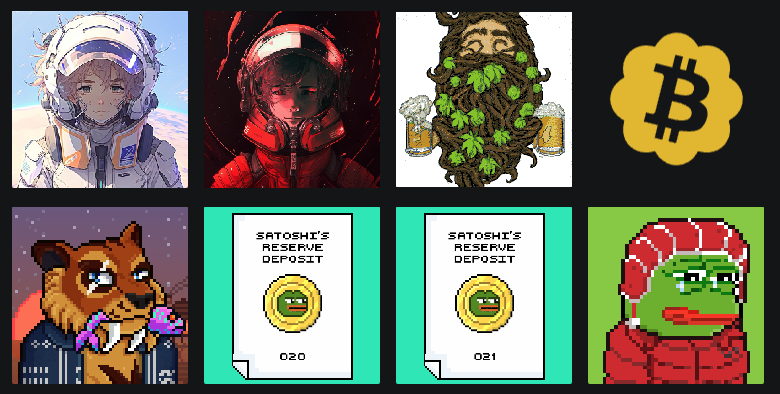On Tuesday (7 February 2023), Binance Research, the research division of Binance, the largest cryptocurrency exchange by trading volume, delved into the topic of Bitcoin NFTs.
In a Twitter thread posted earlier today, Binance Research said that traditionally, the Bitcoin blockchain was only used for payment transactions, but recently a new protocol known as the Ordinals protocol has emerged, introducing on-chain, Bitcoin-native NFTs.
Before the advent of Ordinals, those seeking NFTs would have to turn to smart-contract platforms like BNB Chain or Ethereum. The Ordinals protocol, however,” creates unique digital artifacts that can be held and transferred across the Bitcoin network.”
Casey Rodarmor, the creator of the Ordinals project, who is a former Bitcoin Core contributor, said in a blog post published on 20 January 2023 that the Ordinals protocol supports putting “inscriptions” on the Bitcoin blockchain, and then went on to explain how inscriptions are different from NFTs:
“Inscriptions are digital artifacts native to the Bitcoin blockchain. They are created by inscribing sats with content using ord, and can be viewed with the ordinals explorer. They do not require a separate token, a side chain, or changing Bitcoin. Inscriptions are created by including content, like an image, text, SVG, or HTML, in an inscription transaction. The content is included in the transaction witness, which normally contains signatures and other data proving that a transaction is authorized. Along with the content, the inscription transaction contains a content type, also known as a MIME type, identifying the type of content to be inscribed…
“Inscriptions are digital artifacts, and digital artifacts are NFTs, but not all NFTs are digital artifacts. Digital artifacts are NFTs held to a higher standard, closer to their ideal. For an NFT to be a digital artifact, it must be decentralized, immutable, on-chain, and unrestricted. The vast majority of NFTs are not digital artifacts. Their content is stored off-chain and can be lost, they are on centralized chains, and they have back-door admin keys. What’s worse, because they are smart contracts, they must be audited on a case-by-case basis to determine their properties. Inscriptions are unplagued by such flaws. Inscriptions are immutable and on-chain, on the oldest, most decentralized, most secure blockchain in the world. They are not smart contracts, and do not need to be examined individually to determine their properties. They are true digital artifacts.“
Inscriptions are finally ready for Bitcoin mainnet.
— Casey Rodarmor (@rodarmor) January 20, 2023
Inscriptions are like NFTs, but are true digital artifacts: decentralized, immutable, always on-chain, and native to Bitcoin. 🧵https://t.co/a4dK7zdITS
According to Binance Research, in recent weeks, the Ordinals protocol has gained widespread popularity, with users experimenting by embedding JPEGs, videos, and even PDFs onto the blockchain.

It also mentions that while some members of the Bitcoin community have raised concerns about the Ordinals protocol potentially driving up transaction fees by consuming block space on the Bitcoin network, there is ongoing debate about whether this is a positive or negative development for the blockchain.
RE: Ordinals
— Pledditor (@Pledditor) January 29, 2023
There's no single correct way to use #bitcoin, but Ordinals are using it in a way that is not ideal for its design
It's akin to parking in a spot designated for ambulance vehicles, obstructing their access and slowing down their ability to save lives
Thread 🧵👇 pic.twitter.com/DSR5tBtbgC
A successful ecosystem of Ordinals / Bitcoin NFTs means:
— Udi Wertheimer (@udiWertheimer) February 7, 2023
– Miners make more money
– Security budget increases
– Bitcoin devs become in-demand
– Bitcoin podcasters get new sponsors
– Speculators on-board to bitcoin/lightning wallets
Literally everyone wins. Let’s do this
How does the Ordinals protocol work? Binance Research states that this protocol works by leveraging core upgrades to the Bitcoin blockchain, including Segwit and Taproot, which have made it easier for developers to manipulate on-chain data. Lastly, they say that it remains to be seen how the Ordinals protocol will affect the Bitcoin blockchain on both a technical and practical level.
Did you know that the Bitcoin blockchain has NFTs?
— Binance Research (@BinanceResearch) February 7, 2023
A new innovation is sparking debate within the Bitcoin community.
A #Binance Research Thread 🧵👇
Image Credit
Featured Image via Unsplash
 cryptoglobe.com
cryptoglobe.com